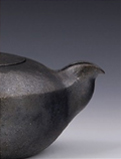the new nomadism
This is a great read from over at the Economist. Broken into a range of sections:
- The new nomadism
- Working from anywhere
- A nomadic environment
- Family ties
- Mobility and location
- Nomadic monitoring
- Homo mobilis
- Audio interview
- Sources and acknowledgments
At Dell we call this The Connected Era. Here’s a snippet:
Anthropologists and psychologists are investigating how mobile and virtual interaction spices up or challenges physical and offline chemistry, and whether it makes young people in particular more autonomous or more dependent. Architects, property developers and urban planners are changing their thinking about buildings and cities to accommodate the new habits of the nomads that dwell in them. Activists are trying to piggyback on the ubiquity of nomadic tools to improve the world, even as they worry about the same tools in the hands of the malicious. Linguists are chronicling how nomadic communication changes language itself, and thus thought. Beyond technology
The most wonderful thing about mobile technology today is that consumers can increasingly forget about how it works and simply take advantage of it. As Ms Canlas sips her Americano and dives into her e-mail in-box at the Nomad Café, she gives no thought to the specifications and standards that make her connection possible. It is the human connections that now take over.
Something Every PR Person Should Read
Great post over at RRW on pitching them. Some terrific rules for every PR pro. I like the ideas on RSS especially and OPML files. All PR Agencies should be doing what Voce are doing…
Voce Communications’ Justin Kistner sent me a great OPML file in response to my asking on Twitter why so few PR people have sent my their clients’ feeds. Here’s the file Justin put together and here’s what it contains:
- The feed for Voce’s company blog, Voce Nation
- A feed for press releases, which he said was empty right now but will deliver the goods when there are items available
- A combined feed of all the Voce peoples’ messages on Twitter, built using the attractive service Tweetpeek – something I hadn’t seen before. I’m going to delete this feed from my reader just because I already converse with two thousand people on Twitter and I don’t need more of those messages in my RSS reader. Better safe than sorry, though – an OPML file can be like a menu for subscribers to select from.
- The highlight of the file is a feed from Yahoo Pipes that splices together the blogs of all of Voce’s PR clients. It’s something that Justin can edit behind the scenes and I’ll never know the difference – I’ll just get posts from the feeds of new clients as he ads their feeds to the master feed I’ve subscribed to. It’s a great solution to the problem.
Hugh Dumps Twitter…
I found it made me lazy as well… and my wife pointed it out… I still enjoy Twittering every now and then and keeping track of all those tweets… the utility is still there so I doubt Twitter is going to face any kind of mass exodus. Last time I looked it’s growth continues…
Stretched Exponential Relaxation
I always wanted to write a headline like that.
Stretched Exponential Relaxation is similar to the gradual decay of radioactive material – and as used in this Economist piece – is a perfect way of looking at how stories age. Like radioactive material, they have a half life. But the stretched bit gets at how much of a role other factors have.
Years ago, we described this as a “story getting legs” – as it jumped the average news cycle with non mainstream media continuing and expanding it. Today we have the likes of TechMeme and Digg – who not only extend the story’s half-life, they mash-it, expand it and grow its popularity. Other factors like the time of day a story is posted and the category into which it was posted suddenly become important.
This is where the difference between novelty and popularity – and I would argue, prominence – becomes apparent. You have a novel story – like the one in The Economist – it doesn’t appear popular, or prominent, until the community takes hold of it and mashes-it-up in their own environment. It’s judged against a “river of news”, ranked, tagged and categorized.
This has big ramifications for communicators.
- Are we delivering news and igniting conversations at a time of day optimized for the community. I’m wondering, for instance, if this doesn’t cause everyone to rethink the early morning announcement?
- The social nature of the content and platform onto which information is released suddenly matters.
- The “cascade of conversation” is more important than the point of conversation. To break out of an ever shrinking half-life the volume of conversations matters. As does reader votes.
Bottom-line – the emphasis on storytelling needs to be paired with an emphasis on the mechanics of distribution.
Curiosity
Great quote from Grazer in The New Yorker…Graze is on the hunt for a “Cultural Attache” – someone to read books for him, educate him on things, connect him with cool and interesting folks… that kind of stuff. Sounds like a neat job… Anyway, he says of a past candidate that didn’t do too well in the job “Under no condition can you teach curiosity”.
He’s right. It’s the number one thing I look for in searching for communicators – especially speechwriters, copywriters and PR folks… The more curious they are, they better I’ve found they are in attention to detail and generating high-quality facts.





